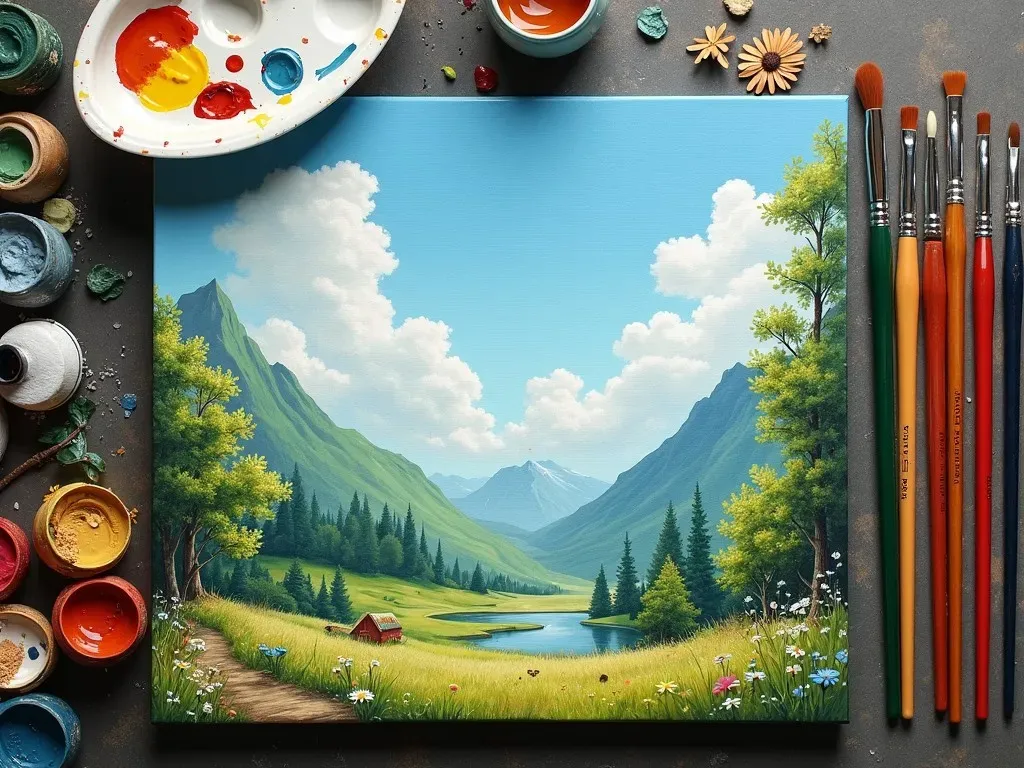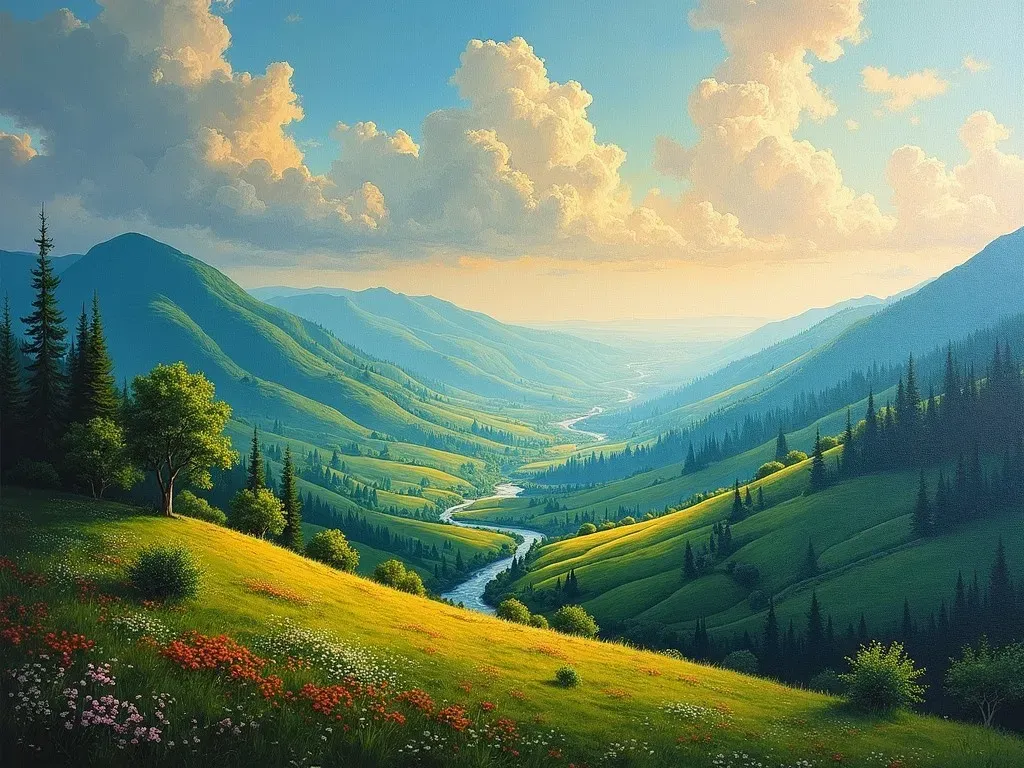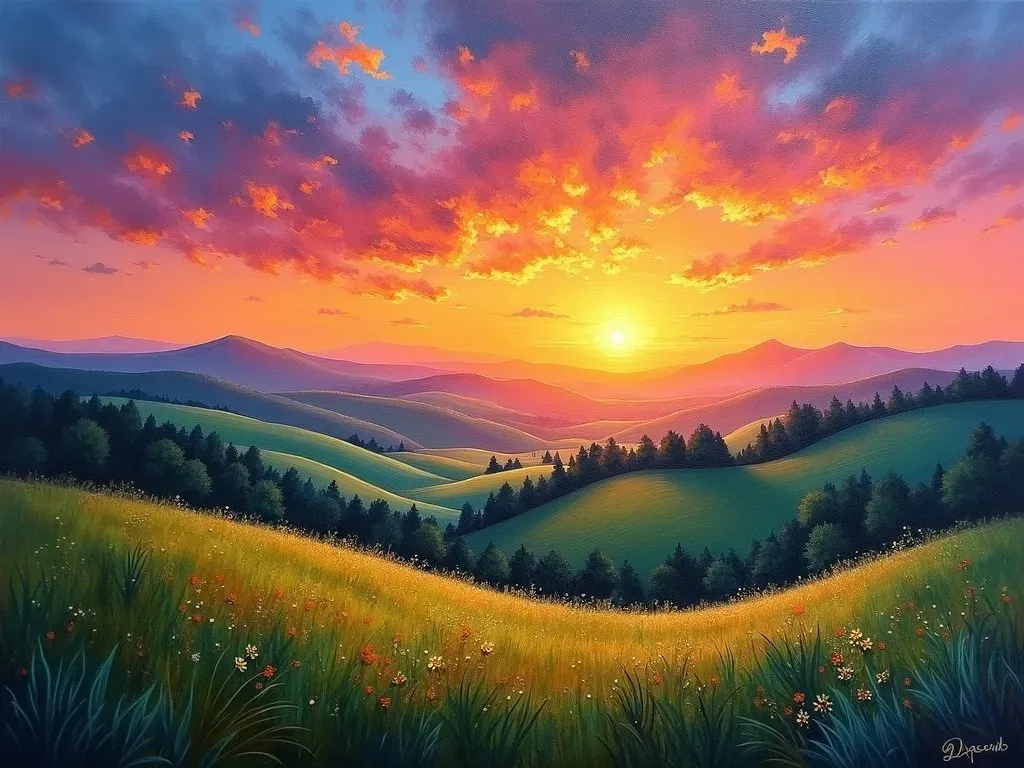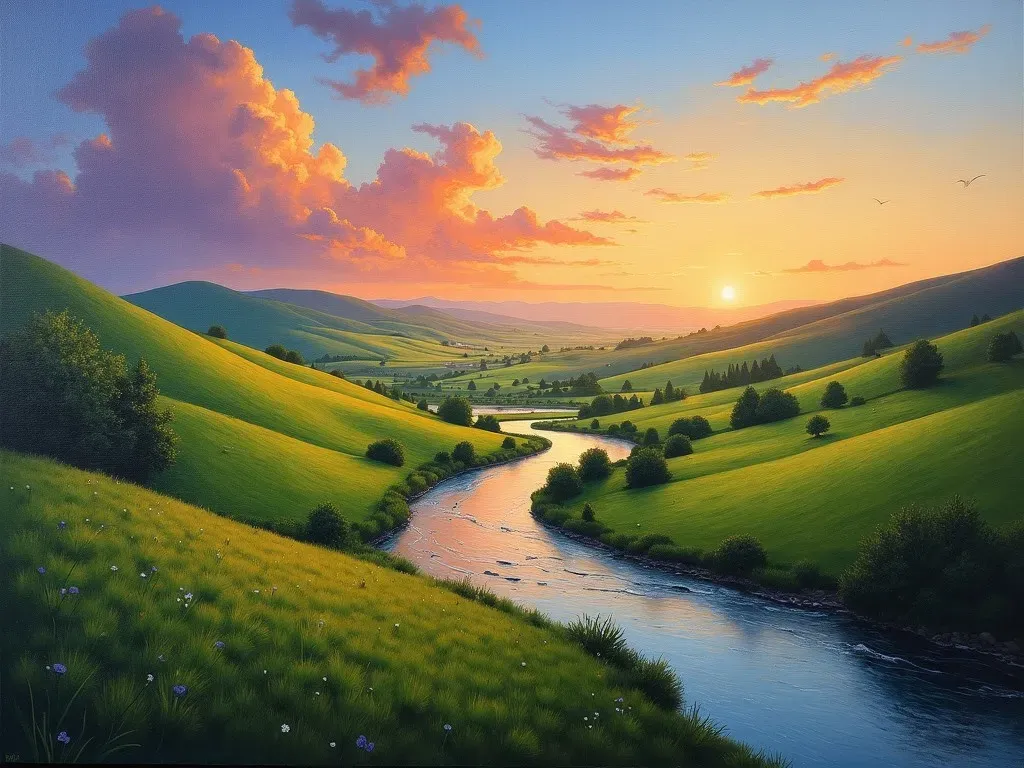Landscape canvas oil painting is an enchanting art form that captures the essence and beauty of nature on a blank canvas using oils. This method allows artists to bring vivid scenes of mountains, valleys, rivers, and skies to life, making it a cherished choice for amateurs and seasoned painters alike.
Understanding Landscape Canvas Oil Painting
What is Landscape Canvas Oil Painting?
Landscape canvas oil painting involves using oil paints on canvas to depict natural scenes. Oil paints are preferred due to their versatility, allowing for a wide range of Techniques, textures, and depths in color. The slow drying time of oil paint enables artists to work at their own pace, blending colors seamlessly and building layers for a rich, immersive effect.
The Benefits of Oil Paints
- Blendability: Oil paints can be easily blended for smooth transitions in color.
- Color Depth: They provide a beautiful, reflective quality that enhances the vibrancy of the painting.
- Texture: Artists can employ various techniques to create texture, adding dimensionality to landscapes.
Key Supplies Required
| Supplies | Description |
|---|---|
| Canvas | Stretched or primed canvas as the painting surface. |
| Oil Paints | A selection of colors; basic colors include titanium white, ultramarine blue, burnt sienna, and cadmium yellow. |
| Brushes | Variety of sizes, including flat, round, and filbert brushes. |
| Palette | For mixing colors; wooden or glass palettes work well. |
| Mediums | Linseed oil, turpentine, or odorless mineral spirits. |
 oil painting supplies">
oil painting supplies">
Essential Techniques for Landscape Painting
1. Planning Your Composition
Before putting brush to canvas, have a clear vision for your composition. Step back and observe your landscape subject. Consider aspects like the placement of the horizon line and the focal point of the painting. Sketch a rough outline on your canvas if needed.
2. Layering and Underpainting
Start with an underpainting to establish a tonal foundation. This basic layer provides a reference for shadows and highlights, which can guide you as you add more layers. The underpainting can be done in a muted color to help the final colors pop.
3. Establishing Shapes
Using a palette knife, block in large shapes of your landscape with broad strokes. It’s easier to refine details afterward when you’ve mapped out the general forms, such as mountains, trees, and water bodies.
4. Building Textures
Use a variety of brush techniques such as stippling, dry brushing, or feathering. Dabbing with a sponge can also create interesting textures, particularly for foliage or grassy areas.
5. Adding Depth
To create depth in your painting, use a technique called atmospheric perspective. This involves softening colors and details in the background while keeping foreground elements sharp and vibrant.

Tips for Beginners
- Start Simple: Choose a landscape scene with fewer elements and work your way up to more complex compositions as your skills improve.
- Practice Color Mixing: Understanding how to mix colors accurately will help you achieve realistic landscapes.
- Observe Nature: Spend time outdoors observing light, shadows, and the way colors change in different environments.
FAQs
What types of canvases are best for landscape oil painting?
Selecting a quality canvas is essential. Stretched canvases are popular as they provide a firm support. Look for pre-primed canvases specifically designed for oil painting.
How do I care for my oil painting supplies?
To prolong the life of your brushes, clean them thoroughly with turpentine or mineral spirits after each session. Store your paints in a cool, dry place away from sunlight.
Can I use watercolors or acrylics for landscape painting instead?
While you can use these mediums, oil paints provide unique qualities that greatly enhance the depth and texture of landscapes. Each medium has its characteristics, and the choice depends on the desired effect.
Are there online resources for learning landscape oil painting?
Yes! Websites like Artists Network offer extensive tutorials, tips, and community support.
Expert Techniques for Advanced Painters
As you delve deeper into landscape canvas oil painting, consider exploring advanced techniques like impasto for dramatic texture or glazing for luminosity. Here’s a brief overview:
| Technique | Description |
|---|---|
| Impasto | Applying thick layers of paint for a three-dimensional effect. |
| Glazing | Layering transparent color to create depth and subtle hues. |
| Sgraffito | Scratching through layers of paint to reveal colors beneath. |

Conclusion to the Art of Landscape Canvas Oil Painting
As you embark on your journey with landscape canvas oil painting, remember that practice is key. Each stroke brings you closer to capturing the beauty of nature, and embracing both the challenges and joys of painting will ultimately enhance your skills and satisfaction as an artist.
Explore more ideas and tutorials in landscape painting through these resources:
With each piece you create, you not only improve your technique but also offer viewers a glimpse into your personal interpretation of the world around you. Happy painting!

